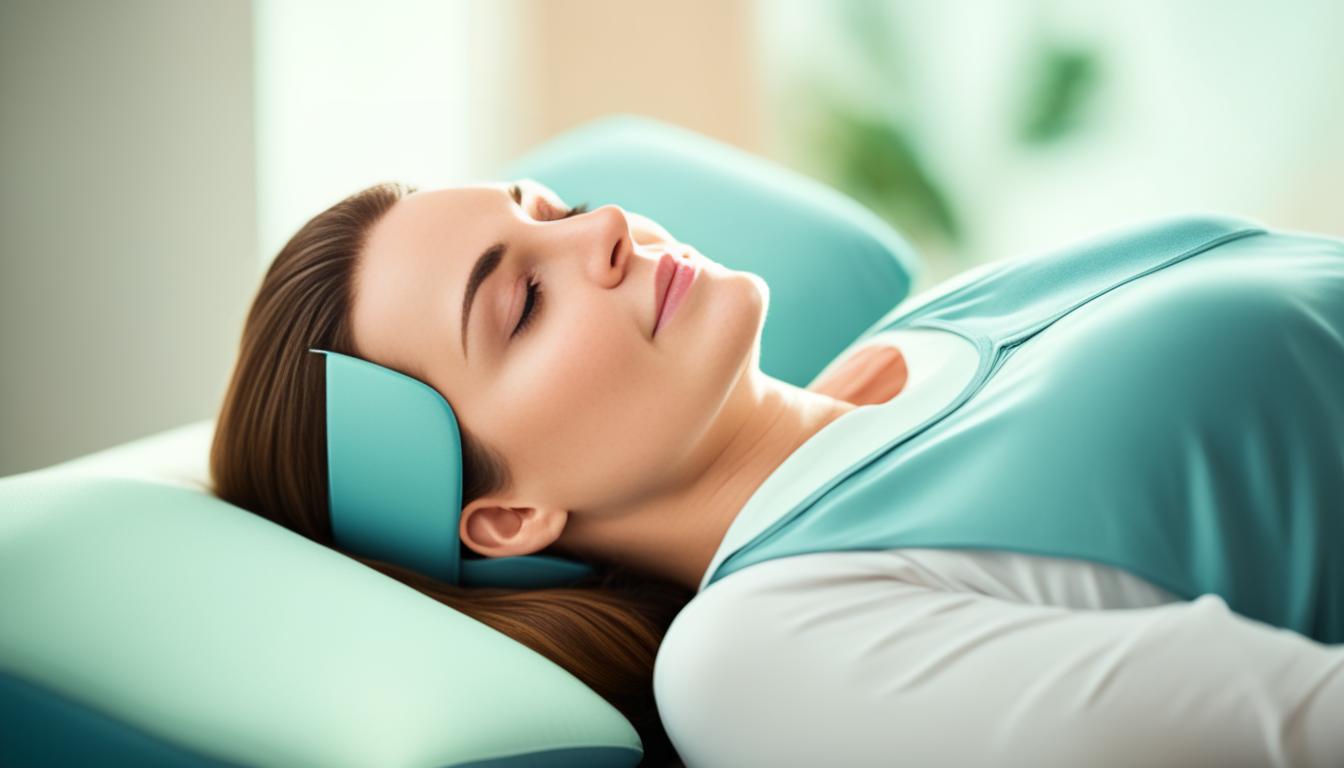Migraines can be debilitating and painful, but there are several strategies you can try to alleviate the pain and find relief. By combining medication with lifestyle changes and behavioral measures, you can effectively manage migraines. Taking care of yourself and knowing how to cope with migraine pain when it strikes is essential.
If you’re looking for ways on how to get rid of a migraine, we’ve got you covered. In this article, we’ll explore various migraine relief techniques and treatments for migraines that you can incorporate into your daily routine. Whether you experience occasional migraines or deal with them regularly, these strategies can help ease the pain and improve your quality of life.
How to Get Rid of a Migraine?
Lifestyle Changes for Migraine Relief
If you’re looking for ways to reduce the frequency and intensity of migraines, incorporating certain lifestyle changes can be highly effective. By making adjustments to your daily routine and implementing coping strategies, you can mitigate the impact of migraines on your life.
Detecting Triggers
To prevent the onset of migraines, it’s crucial to identify and avoid triggers. Take note of any specific factors that seem to precede your migraines, such as certain foods, strong smells, bright lights, or loud noises. Once you’ve recognized your triggers, make a conscious effort to remove yourself from these environments or situations as soon as you notice the initial signs of a migraine.
Creating a Calm Environment
Creating a calm environment in both your home and workplace can contribute to migraine relief. Dim the lights, reduce noise levels, and adjust the temperature to create a soothing atmosphere. If you find that light exacerbates your migraines, consider wearing sunglasses or using blackout curtains to minimize exposure.
Hot and Cold Therapy
In the early stages of a migraine, you can try using hot or cold compresses to provide relief. Applying a cold compress to your forehead or the back of your neck may help alleviate pain and reduce inflammation. On the other hand, some individuals find comfort in using a warm compress or taking a warm bath to relax tense muscles and promote relaxation.
Caffeine in Moderation
While excessive caffeine intake can trigger migraines in some people, consuming caffeine in moderation may actually help relieve pain. Sipping a caffeinated beverage, such as tea or coffee, during the early stages of a migraine can potentially provide relief. However, it is essential to ensure that you don’t consume excessive amounts of caffeine, as this can lead to dependency and rebound headaches.
Establishing Healthy Habits
Avoiding migraines involves establishing consistent healthy habits. Aim for regular sleep patterns by going to bed and waking up at the same time each day. Prioritize unwinding before bedtime to promote relaxation and quality sleep. Additionally, maintaining well-balanced and consistent eating habits can prevent fluctuations in blood sugar levels, which can trigger migraines.
Regular Exercise and Stress Management
Engaging in regular physical activity can significantly reduce the occurrence of migraines. Aim for moderate exercise, such as brisk walking or swimming, for at least 30 minutes a day. Exercise helps regulate hormones, relieve stress, and improve overall well-being. Speaking of stress, managing stress effectively is crucial for migraine management. Explore stress reduction techniques like yoga, meditation, deep breathing exercises, or engaging in hobbies that bring you joy.
| Lifestyle Changes for Migraine Relief | Benefits |
|---|---|
| Finding and avoiding triggers | Prevents migraine onset |
| Creating a calm environment | Reduces stress and triggers |
| Hot and cold therapy | Provides pain relief and relaxes muscles |
| Moderate caffeine intake | Potential relief for some individuals |
| Establishing healthy habits | Promotes stable blood sugar levels and quality sleep |
| Regular exercise and stress management | Decreases migraine occurrence and enhances overall well-being |

Medication for Migraine Relief
When it comes to managing migraines, medication can play a crucial role in providing relief and preventing future episodes. There are several types of medication available that target different aspects of migraine symptoms.
Painkillers for Migraines
Painkillers such as ibuprofen and paracetamol can offer temporary relief from migraine pain. These over-the-counter medications work by reducing inflammation and easing discomfort. However, it’s important to follow the dosage instructions on the label and not exceed the recommended amount to avoid potential side effects.
Triptans – Migraine-Specific Medication
Triptans are a class of medication specifically designed to treat migraines. These drugs work by constricting blood vessels and blocking pain signals in the brain, providing effective relief for many migraine sufferers. Commonly prescribed triptans include sumatriptan, rizatriptan, and naratriptan. However, it’s essential to consult with a healthcare professional to determine the most suitable triptan for your specific needs and to discuss any potential side effects or interactions with other medications.
Anti-Nausea Medication
Nausea and vomiting are common symptoms that often accompany migraines. Anti-nausea medication can help alleviate these symptoms and improve overall comfort during migraines. Medications such as metoclopramide and prochlorperazine are commonly prescribed to address the nausea and vomiting associated with migraines. As with any medication, it’s important to consult with a healthcare professional before starting any new treatment.
Remember, medication is just one part of a comprehensive approach to managing migraines. It’s essential to combine medication with lifestyle changes, relaxation techniques, and other strategies to effectively reduce the frequency and intensity of migraines.

Managing Migraines at Home
In addition to medication, there are various home remedies and techniques that can help manage migraines. Incorporating these natural methods into your routine can provide relief and support your overall well-being.
1. Applying Temperature Therapy
Applying a cold pack or a heating pad to the head or neck can help alleviate migraine pain. The cold pack helps numb the area and reduce inflammation, while the heat from a heating pad promotes relaxation and improves blood flow. You can experiment with both methods to see which works best for you.
2. Taking a Soothing Warm Shower
A warm shower can help relax your muscles and ease tension, providing relief from migraines. Allow the warm water to flow over your head and neck, focusing on the areas where you feel the most pain or discomfort. This can help alleviate the intensity of the migraine and promote relaxation.
3. Utilizing Relaxation Techniques
Deep breathing exercises and gentle massage can be effective relaxation techniques for managing migraines. Take slow, deep breaths, focusing on inhaling and exhaling fully. Massage your temples and scalp using gentle circular motions to alleviate tension and promote relaxation. These techniques can help reduce stress and provide relief from migraine symptoms.
4. Staying Hydrated
Drinking plenty of fluids, especially water, is important for managing migraines. Dehydration can trigger migraines or make them worse, so it’s essential to stay hydrated throughout the day. Aim to drink at least 8 glasses of water daily and consume electrolyte-rich beverages, like coconut water, to maintain proper hydration.
5. Avoiding Triggers
Identifying and avoiding triggers that may contribute to your migraines can help prevent future attacks. Common triggers include certain foods (such as chocolate, cheese, and processed meats), caffeine, alcohol, bright lights, strong odors, and stress. Keeping a migraine diary can help you track your symptoms and identify patterns, making it easier to avoid triggers in the future.
6. Managing Stress
Stress can be a significant trigger for migraines. Engaging in stress management techniques, such as yoga, meditation, or listening to calming music, can help reduce stress levels and minimize the occurrence of migraines. Prioritizing self-care and finding healthy outlets for stress can contribute to migraine relief.
Migraine Management at Home
To summarize, managing migraines at home involves a multifaceted approach that combines medication with natural remedies and lifestyle changes. By incorporating temperature therapy, relaxation techniques, maintaining hydration, avoiding triggers, and managing stress, individuals can find relief and reduce the frequency and intensity of migraines. It is important to remember that each person’s experience with migraines is unique, and what works for one person may not work for another. Experiment with different approaches and consult with a healthcare professional if needed to find a personalized migraine management plan that suits your individual needs.
When to Seek Medical Care?
While most migraines can be managed at home, there are instances where it is necessary to seek medical care. If your migraines are severe, getting worse, or lasting longer than usual, or if you are experiencing neurological symptoms such as dizziness, speech problems, confusion, or have had a head injury, it is important to consult with a healthcare professional. Additionally, if your migraines are causing significant difficulty in managing daily life or if over-the-counter medications are not providing relief, it may be time to seek medical care.
Conclusion
Managing migraines effectively is crucial for improving your quality of life. By combining medication, lifestyle changes, and home remedies, you can find relief from the debilitating symptoms of migraines. Take care of yourself by identifying triggers, practicing self-care techniques, and seeking medical advice when necessary.
When managing migraines, it is essential to consult with a healthcare professional for personalized advice and guidance. They can help you navigate the best treatment options for your specific needs and recommend appropriate medications to alleviate the pain.
Remember, migraines can be challenging, but with the right approach, you can effectively manage them and minimize their impact on your daily life. Stay proactive, stay informed, and take control of your migraine management for a better future.
FAQs
What causes migraines?
The exact cause of migraines is not fully understood, but they are believed to be triggered by a combination of genetic, environmental, and neurological factors.
What are the symptoms of a migraine?
Common symptoms of migraines include severe headache pain, nausea, vomiting, sensitivity to light and sound, and in some cases, visual disturbances.
How long do migraines last?
Migraine attacks can last anywhere from a few hours to several days, depending on the individual and the severity of the migraine.
Are migraines dangerous?
While migraines are not life-threatening, they can be debilitating and significantly impact a person’s quality of life. If you experience severe or worsening migraines, it is important to seek medical care.
What causes migraines in females?
Hormonal changes and fluctuations are common triggers for migraines in females. Migraines often occur during menstruation, pregnancy, or menopause.

